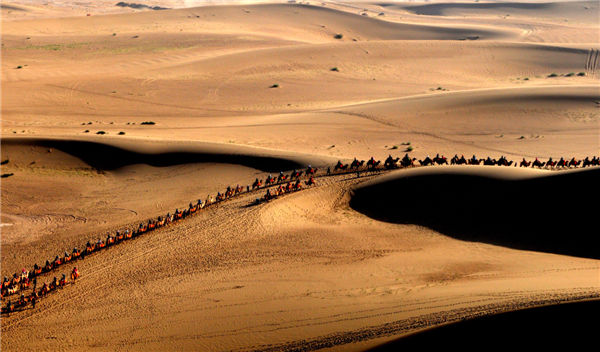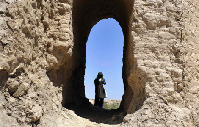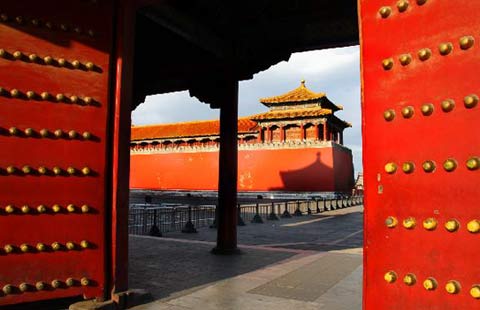 |
|
Tourists take a camel ride to explore the Gobi desert in Dunhuang, a key stop on the ancient Silk Road. [Photo/China Daily]
|
"The dry climate in the area makes it easier to preserve earthen ruins. It would have been impossible in the south," says Guo Qinglin, deputy director of the Conservation Institute of Dunhuang Academy.
To allow people to better understand the value of the relics, a large-scale renovation of the sites was launched in 2006.
Until the early 1980s, the Big Fangpan Castle in the Yumen Pass was used as a sheepfold for the local farmers, says He Guowu, head of the administration office of the Yumen Pass.
In 2012, Cai and his team started restoration work on the site. Mines near the site were shut down. Now people can follow the wooden trestle that leads into the castle, where a glass-clad platform has been built so visitors can see the interior of the castle without causing damage.
The high steel fence around the castle has been replaced with knee-high steel posts, allowing a better view. "The substitute is rather simple and cheap, but it has been proved very effective," says Cai.
The administration house has been painted with brown earth, which blends with its surroundings.
























 Raymond Zhou:
Raymond Zhou: Pauline D Loh:
Pauline D Loh: Hot Pot
Hot Pot Eco China
Eco China China Dream
China Dream China Face
China Face






